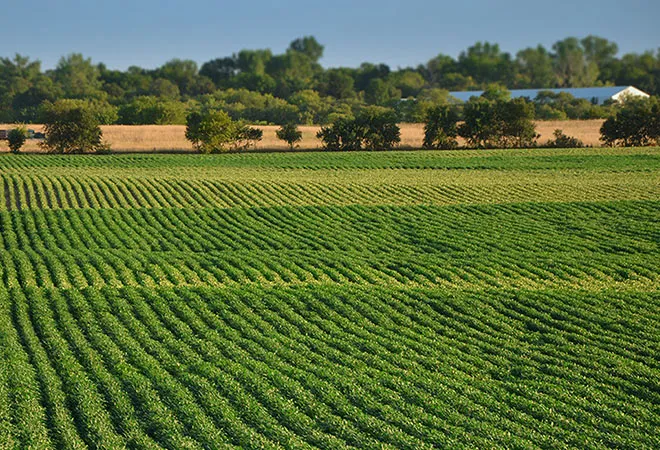Regenerative Agriculture Market Development: Building Resilience Through Innovation and Sustainability
In the face of climate change, soil degradation, biodiversity loss, and growing food insecurity, the global agricultural industry is undergoing a profound transformation. At the heart of this shift is regenerative agriculture—a holistic approach to farming that emphasizes soil health, ecological balance, and long-term sustainability. As this movement gains momentum, the regenerative agriculture market is developing rapidly, attracting interest from farmers, investors, corporations, and policymakers alike.

Understanding Regenerative Agriculture
Regenerative agriculture goes beyond conventional sustainable practices by actively working to restore ecosystems. It includes methods such as no-till farming, cover cropping, composting, agroforestry, rotational grazing, and integrated pest management. These practices not only maintain productivity but also enhance soil fertility, increase biodiversity, improve water retention, and sequester carbon dioxide—making it one of the most promising tools in the fight against climate change.
The regenerative agriculture market is not limited to food production; it also encompasses regenerative inputs, agri-tech services, carbon markets, and ecosystem services. As awareness grows, the market is developing into a multi-dimensional ecosystem with broad-reaching impact.
Evolution of the Market
The regenerative agriculture market has evolved from grassroots experimentation to a global movement over the past two decades. Initially practiced by small-scale organic farmers and indigenous communities, regenerative methods have now caught the attention of multinational corporations, academic institutions, and investment funds.
In the 2010s, organizations like the Rodale Institute and Savory Institute began to popularize the term “regenerative,” creating frameworks and pilot programs. The 2020s have seen the concept take off, driven by:
-
Increased environmental awareness,
-
Climate pledges from global corporations,
-
Carbon market development, and
-
A growing consumer demand for ethical and eco-friendly products.
Drivers of Market Development
Several powerful forces are shaping the current growth of the regenerative agriculture market:
1. Climate Commitments and Carbon Sequestration
Governments and corporations worldwide are pledging to reach net-zero emissions, and regenerative agriculture offers a viable pathway. Healthy soils can store large amounts of carbon, making regenerative farms attractive participants in voluntary carbon markets. Startups and carbon platforms are emerging to help quantify and monetize this benefit.
2. Corporate Investment and Supply Chain Shift
Companies such as General Mills, Danone, PepsiCo, and Nestlé are integrating regenerative practices into their supply chains. This has created a wave of private sector investment, including funding for farmer education, infrastructure, and monitoring tools.
3. Technological Innovation
Digital tools such as remote sensing, AI-based soil health analytics, and blockchain-based traceability are accelerating the ability to scale regenerative agriculture. These innovations improve data collection, outcome verification, and transparency across the supply chain.
4. Policy Support and Incentives
Governments in Europe, North America, and parts of Asia are beginning to realign agricultural subsidies to support regenerative practices. Soil health programs, tax incentives, and climate-smart agriculture policies are helping reduce the financial burden on transitioning farmers.
Market Segmentation
The regenerative agriculture market can be broken into several key segments:
-
Regenerative Inputs: Organic fertilizers, cover crop seeds, microbial soil enhancers, and biochar.
-
Regenerative Products: Crops and livestock raised using regenerative practices.
-
Carbon and Ecosystem Services: Revenue from verified carbon credits and biodiversity outcomes.
-
Technology and Data Platforms: Tools for monitoring, certification, and performance tracking.
-
Education and Advisory Services: Training and consulting for farmers adopting regenerative systems.
Challenges in Market Development
Despite strong momentum, the development of the regenerative agriculture market faces several roadblocks:
-
Lack of Standardized Definitions: There is no universally accepted standard for what constitutes "regenerative," making it difficult to regulate and certify.
-
Transition Risk and Costs: Moving from conventional to regenerative farming requires new equipment, training, and a mindset shift—often without immediate economic returns.
-
Measurement and Verification: Soil health and biodiversity improvements are difficult to quantify, which complicates participation in carbon markets.
-
Access and Equity: Smallholders and marginalized farmers may lack the resources or support systems needed to adopt regenerative practices at scale.
Future Outlook
The future of the regenerative agriculture market looks promising and transformative. Market forecasts project significant growth over the next decade, driven by:
-
Greater consumer awareness of sustainability,
-
Corporate ESG (Environmental, Social, Governance) demands,
-
Expansion of carbon credit trading systems,
-
New regenerative product labeling and certification systems,
-
Scalable digital agriculture tools.
As more stakeholders align around regenerative goals, we can expect to see innovative financing mechanisms, such as blended finance, green bonds, and regenerative investment funds. In parallel, public-private partnerships will play a crucial role in making regenerative farming accessible and equitable.
Conclusion
The development of the regenerative agriculture market marks a pivotal shift in how we think about farming, food systems, and environmental responsibility. No longer just a niche movement, regenerative agriculture is emerging as a mainstream solution for building climate resilience, supporting rural economies, and feeding a growing population sustainably.
To ensure the continued growth of this market, investments must be made in education, infrastructure, standards, and policy reform. With the right support, regenerative agriculture can help transform not only how we grow food—but how we restore the planet.
- Art
- Causes
- Crafts
- Dance
- Drinks
- Film
- Fitness
- Food
- Games
- Gardening
- Health
- Home
- Literature
- Music
- Networking
- Other
- Party
- Religion
- Shopping
- Sports
- Theater
- Wellness


